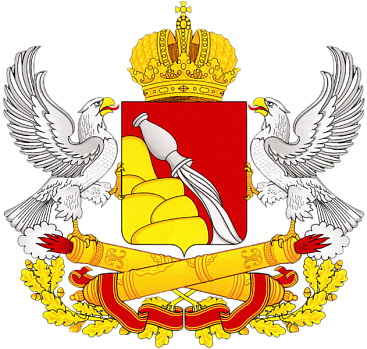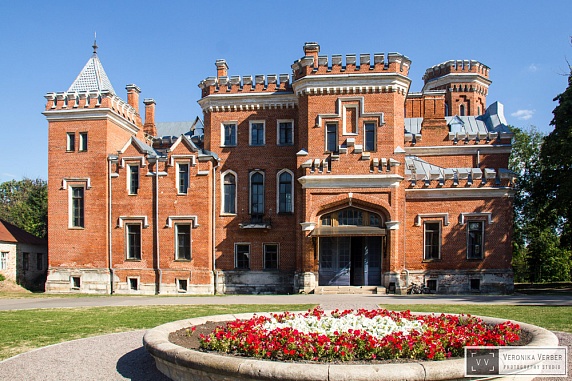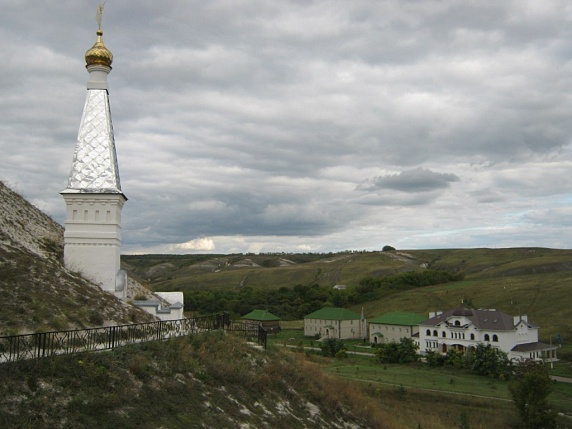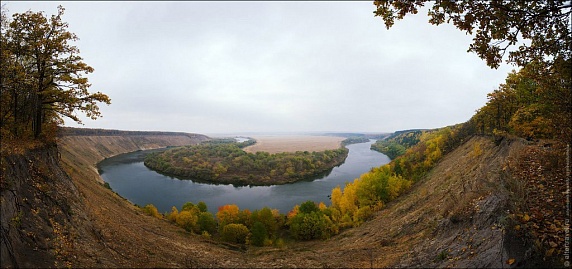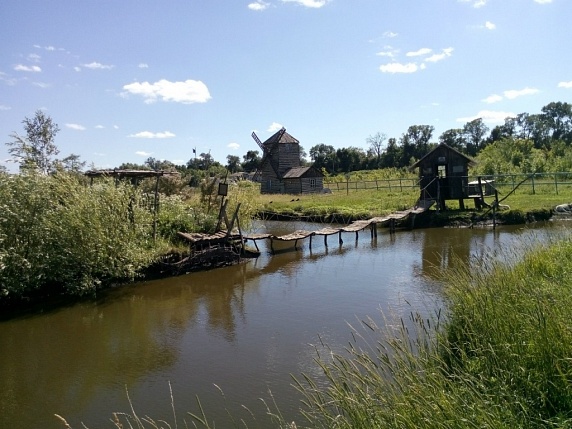 Voronezh Region
Voronezh Region
Information of the Voronezh Region
Information of the Voronezh Region
|
Year of formation
|
1934 |
|
Territory |
52.2 thousand km² (0.3% territory of Russia)
|
|
Population (as of 01.01.2025), thousand people
|
2259.6
|
|
Density of population |
43.3 people per 1 km²
|
|
Administrative center
|
Urban District of Voronezh [municipality] |
|
Distance to Moscow |
587 km (by train)
|
Geographical position and landscape
The Voronezh Region is located in a central part of the East European Plain. It borders the Belgorod, Kursk, Lipetsk, Tambov, Saratov, Volgograd, Rostov regions and Lugansk People’s Republic. The Voronezh Region is a part of the Central Federal District.
The climate is moderately continental with average annual temperatures ranging from +4.6 °C to +5.6 °C in the north of the region and from +6.5 to +7.5 °C in the south. The Voronezh Region is located in the forest-steppe and steppe zones.
The terrain of the Voronezh Region is generally flat and slightly undulating. The highest point of the Region is 259 meters above sea level; the lowest one is in the extreme south where the Don crosses the southern border of the Region - 57 meters.
Natural resources
Land resources of the Region encompass 4.1 million hectares of farmland, including 3 million hectares of high-yield black soil arable land. The soils consist of leached and typical black soils in the north, while common black soils are found in the south.
Mineral resources of the Voronezh Region are represented by non-metallic raw materials, used mainly in construction, (such as sand, clay, granite, sandstone, limestone, ochre, cement raw materials) particularly in western and southern parts of the region. The region is rich in chalk resources. It also has phosphorite reserves and significant amounts of nickel, copper and platinum.
The natural landscape of the Region is characterized by extensive forests, many of which have the status of forest reserves, there are areas of indigenous steppes.
The forest resources include oak, pine, birch and alder wood and perform mainly protective forest belt role. Forest land constitutes about 10 % of the territory.
The main river of the Voronezh Region is the Don River. It is navigable and connects the center of Russia to the Black Sea and the sea of Azov. Other rivers have relatively low water levels.
Recreational resources of the Region are extremely diverse and promising for recreation and tourism. There are the Voronezh and the Novokhopyorsk Biosphere Reserves in the Region.
Administrative and territorial division
The Region consists of 3 urban districts [municipalities], 31 municipal districts, with 28 urban settlements and 414 villages. There are 15 towns, 4 urban-type communities, 13 workers' settlements and 1699 rural settlements.
The administrative center is the Urban District of Voronezh with the population (as of 01.01.2025) of 1041.7 thousand people.
Voronezh first appeared in 1586 as a fortress. In XVII century, it became a largest center of trade. Since 1711, it was the center of the Azov province, and since 1725 – of the Voronezh province. Today Voronezh is one of the agro-industrial centers of Russia.
The other largest municipalities are Borisoglebsk and Novovoronezh with the population of, respectively, 67.4 and 30.6 thousand people.
The proportion of urban population is 68.5%; of rural population – 31.5%. Density of population is 43.3 people per 1 km².
The Region’s center is the Urban District of Voronezh, located on the river Voronezh.
Transport infrastructure
The Voronezh Region is situated in the transport communications hub that connects it with the industrial areas of Russia and CIS countries. Airport “Voronezh” has been a holder of the international status since 1995.
A number of major highways, such as Moscow – Novorossiysk, Moscow –Astrakhan, Kursk – Saratov, Voronezh – Tambov go through Voronezh. Important highways are also Voronezh – Lugansk and Belgorod – Rossosh.
The South-East railroad, one of the most high-capacity transport arteries in the Russian railway network, connects the center of the European part of the country with North Caucasus, Volga River basin, and the Eastern part of the country.
The establishment of municipal road funds, in addition to the already existing federal and regional road funds, not only increased the financing of the industry, but also ensured the stability and predictability of financial flows, made it possible to develop long-term goal-oriented programs secured with resources, including regional and municipal ones. The said funds also make it possible to maintain and develop road network.
Owing to a system of long-term contracts for the implementation of highways maintenance works, it became possible to increase the share of regional or inter-municipal public roads that meet the Voronezh Region regulatory requirements, up to 70.5%.
Labour resources
The average number of labour resources at the end of 2024 amounted to 1223 thousand people, the majority (97.8%) are employed, while the unemployed account for 2.2%.
The average annual number of people employed in the economy in 2024 was 1161.9 thousand people. Of the number of employees, 13.3 % worked in the manufacturing sector, 10.9% in agriculture, 20.8% in trade, 7% in education, 6.4% in healthcare and social services institutions.
Economic development
According to the volume of its economy, the Voronezh Region has traditionally been among the top three of the Central Federal District regions (after Moscow and the Moscow Region), and is among 25 most economically developed regions of the country.
The volume of the GRP is over 1.4 trillion rubles; over the past 10 years the volume of the GRP increased more than twofold and went up from 611.7 billion rubles (year 2013) to 1377.7 billion rubles (year 2022).
The leading types of economic activity securing over 63.6% of the produced GRP are industrial production (19.3%), agriculture (16.2%), trade (16.5%), construction (6%), transportation and storage (5.6%).
Industrial production
The growth rate of the Region's industry has been ahead of the national average for more than 10 years.
The leading industrial productions in the Region are: electric power generation, foodstuffs, chemicals, rubber and plastic goods, means of transport and equipment, machinery and equipment, electrical equipment, electronic and optical equipment, metallurgical production and fabricated metal products, other non-metallic mineral products.
The Regional enterprises produce airbuses “IL-96” (the only production of wide-body long-range passenger aircrafts in the country), military transport aircrafts “IL-112B”; space-rocket engines; electrical equipment and communication facilities; steel bridge structures; synthetic rubber; mineral fertilizers; car tires; ore-dressing equipment; equipment for oil and gas extraction, transportation and processing; forge-and-pressing machines; ceramic facing tile and ceramic-granite; walling; cement, metal and concrete products and constructions; wide range of foodstuffs, etc.
In 2024, industrial production increased by 102.5% compared to the level recorded in 2023 (in 2023 – 109.9% compared to the level recorded in 2022). The positive dynamins in the processing industry 102.7% and in the electricity, gas, steam supply, 102.4% ensured growth.
Agriculture
The Voronezh Region is an area of intensive and developed agricultural production due to its natural, climatic and economic conditions. 3/4 of the Region's soils are black soils. The region has achieved full food self-sufficiency in terms of essential foodstuff.
Leading agricultural sectors are livestock farming (cattle breeding, pig breeding, sheep breeding, poultry farming) and plant cultivation (wheat, corn, sugar beet, sunflower).
In recent years, the Voronezh Region has been taking a leading position in the Central Federal District and the country as a whole in the crop production industry. In terms of the gross harvest of sugar beet, the Voronezh Region traditionally holds 2nd place in the Russian Federation. In the years 2022-2024, the region twice set a record for the gross harvest of cereal crops, legumes and sunflower.
The region has solved the problem of dependence on imported vegetables during the off-season. Since 2020, 75 hectares of greenhouses have been built and the production of greenhouse vegetable has been increased from 16.2 tons in 2019 to 33.1 tons, which constitutes 122% to the demand of the region population (14.6 kg per 1 person per year).
In order to substitute import, a powerful seed-growing cluster has been established. It includes 23 certified seed farms, 6 plant-breeding centers, research institutions, and 7 seed production plants.
The livestock industry consists of dairy and meat clusters. The Voronezh region is the second largest producer of meat in the country in all categories of farms. The production of meat over the 5-year period has increased by one-third (126.6%), and pig breeding was developing at a faster pace (141.0%). Despite the challenging epizootic situation, 680 thousand tons of meat and 838 million eggs were produced.
The processing industry developed dynamically: in 2024 1st place in Russia for the production of vegetable oil (1.3 million ton) and butter (23.4 thousand ton), 2d place for the production of confectionery products (409 thousand ton), 3rd place for the production of sugar (833.2 thousand tons) and 4th place for the production of cheese (58.6 thousand ton).
Investment
The Regional Government pursues an active investment policy geared to the solution of strategic objectives of economic modernization, renovation and diversification of the production sphere.
In order to create a comfortable business environment, to optimize regulatory procedures in the Voronezh Region, the Standard of the Executive Bodies' Activity was introduced to ensure a favorable investment climate.
Currently, there are 5 state Industrial Parks in the Region – “Maslovsky”, “Maslovsky 2”, “Liskinsky”, “Bobrovsky”, “Podgorensky”, and two private industrial parks – “Perspectiva” and “Voronezh”.
Since 2018 in the Voronezh Region there is social-and-economic priority development zone “Pavlovsk” and a Special Economic Zone of industrial-production type “Center”.
In accordance with the Federal Law “On the State (Regional) Support of Investment Activity in the Voronezh Region” the executive bodies of the Voronezh region are supporting 70 particularly significant investment projects with cumulative investment of RUB 271.3 billion.
In the National Investment Climate Rating in 2024 the Voronezh region was among top 10 leading regions ranking 9th among 85 subjects of the Russian Federation.
Construction
The building complex of the Voronezh Region is one of the largest and most significant sectors of the Region's economy that provides construction of industrial, civil and residential facilities of any complexity with the use of modern materials and technologies.
The volume of work performed by the type of activity “Construction” amounted to 209.8 billion rubles in 2024 and increased by 11.4% to the level of 2023 (in Russia – 2.1%).
In terms of the volume of the total area of housing commissioned, the Voronezh Region is one of the Russian Federation subjects that provide the largest annual growth in housing, and ranks 3d in the Central Federal District, second only to Moscow and the Moscow Region, and is among Top-20 regions-leaders of the Russian Federation. As of the end of 2024, 1.9 million square meters of housing were commissioned.
On average, 34.6 square meters of housing are available per 1 resident of the Voronezh Region, which corresponds to the 9th place in the rating of the subjects of the country.
Consumer market
Trade is one of the fastest developing sectors of the regional economy.
In terms of the generated volume of retail trade turnover, the Voronezh Region traditionally ranks 3d in the Central Federal District (after Moscow and the Moscow Region).
In the structure of the economy, trade turnover accounts for more than 16.5%, the number of people employed in this sphere is about 15% of the economically engaged population of the Region. Over 20 thousand economic entities operate on the territory of the Region in all segments of the consumer market, as well as over 150 shopping centers.
Communication and information technologies
Local, long distance and international phone landline communications, mobile and postal services, telematic services and broadcasting provided by the work of telecom operators are widespread in the Region.
Mobile services market shows the highest growth rate. All the largest mobile operators of the country are represented in the Region.
Since 2010, the Voronezh Region Autonomous Institution “The Multifunctional Center for the Provision of State and Municipal Services” (MFC) has been operating in the Voronezh Region.
The MFC-based user support sectors provided 437.6 thousand electronic services. User support sectors providing consulting assistance to citizens when working with electronic services are organized in all MFCs of the Region. In order to increase the availability of electronic services, 26 SMART MFCs have been created in the Region.
Currently, there are 2078 business entities in the IT industry of the Region (including sole proprietors). Of these, 376 companies are software developers, accredited companies - 234. The number of copyright holders in the Russian software registry is 51, and the number of software products is 105.
Banking system
As of the beginning of 2025, there are 43 credit institutions in the Voronezh Region. Altogether, with the additional offices, operating cash desks outside the cash centers, there are 469 units of credit institutions in the Voronezh Region, including 7 branches of banks from other regions (including the Tsentralno-Chernozyomny Bank PAO Sberbank of Russia), 454 supplementary offices and 2 representative offices of credit institutions from other regions as well as 7 virtual offices.
Education
There are 1653 municipal and state educational institutions within the Voronezh region education system, serving approximately 400 900 students in total. 33 800 teachers are employed in the regional education system.
The Voronezh Region holds 6th place in Russia in terms of the number of university students (373 per 10 thousand of the population), and is in the top 20 regions in terms of the number of professional education institutions. Thus, in the Central Federal District, the Region ranks 3d according to the number of university students and the number of professional education institutions. The system of higher and vocational education includes 16 universities (not including branches) with 88.6 thousand students (all forms of education); 52 vocational schools with the student body of over 54.9 thousand. The Universities offer more than 200 majors.
Healthcare
The improvement of the three-level healthcare system has been continued: new units created, new technologies for medical care introduced, new healthcare facilities built and put into operation.
The material and technical base of healthcare has continued to strengthen: new hospitals, polyclinics, feldsher-obstetric stations and outpatient clinics are built.
In order to increase the availability and quality of complex cardiovascular examinations, a center for ultrasound diagnostics of heart and blood vessels was opened. A radiotherapy building for the Voronezh Region Clinical Oncology Center was also put inro operation.
Culture
The Voronezh Region is a birthplace of lyrical folk poets A. Koltsov and I. Nikitin; the world-famous writers I. Bunin, A. Platonov and G. Troyepolsky; columnist V. Peskov; artist I. Kramskoy.
There are 8 state and municipal theaters, 4 concert halls, 28 museums in the Region.
With the support of the Government of the Voronezh Region, large-scale cultural projects are implemented: the events of the Moscow Easter Festival, an international-scale image project - International Platonov Arts Festival, festival of ballet dancers - “Voronezh Stars of World Ballet”, summer theater festival “Ramenie-Opera”, festivals of academic music – “Voronezh Camerata”, “Voronezh Names”, Festival of Children's Theater Groups MARSHAK, “Mandelstamfest”, Academic artistic “open airs” with the participation of members of the Russian Academy of Arts and artists of the CFD regions.
Sights
Among places of interest are such architectural monuments of XVII - XIX centuries as historical and cultural center “the Oldenburg Palace complex”, Museum “Arsenal”; the Fine Arts Museum named after I. Kramskoy; the State Archaeological Museum “Kostenki” (the Khokholsky District), and the architectural and archaeological museum “Divnogorie” (the Liski District); the “museum-on-the-ship” “Goto Predestinatio”, a life-size copy of the first Russian battleship built in 1700 without foreign shipbuilders.

